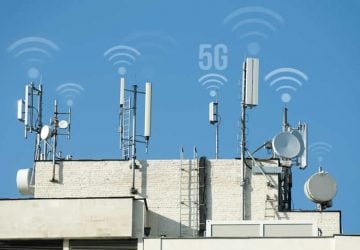- Published on
Unlocking the Secrets of 5G Towers: A Guide to Their Environmental Impact
Unlocking the Secrets of 5G Towers: A Guide to Their Environmental Impact
With the advent of 5G technology comes exceptionally fast data transfer rates and an enhanced level of connectivity. Nonetheless, the environmental impact of these advances is increasingly garnering attention. The extensive network of 5G towers obligatory for service coverage necessitates heavy energy use, occupies significant space, and requires vast amounts of resources that could potentially affect natural habitats. Our examination will consider the environmental facets of 5G, shedding light on how to sustainably integrate this technology into our lives.

Energy Consumption Concerns
5G's promise of remarkable speeds and greater capacity is offset by its substantial energy needs. The proliferation of towers and dense network architecture, meant to support short-range radio waves, results in heightened electricity usage. Even if individual towers are designed for efficiency, the cumulative effect may counteract these benefits. To address this, renewable energy sources and efficient systems should be employed to mitigate the environmental effects.
Material Use and Electronic Waste
Deploying 5G technology necessitates fresh infrastructure which, in turn, requires new materials for tower construction and operational electronics—some of which are scarce and obtained through environmentally detrimental practices. The result is not just strain on natural resources, but also an increase in electronic waste. It is therefore imperative to uphold principled practices in material sourcing, recycling, and waste management to decrease environmental damage.
Potential Effects on Wildlife
The possible repercussions of 5G technology on wildlife are also worrisome. It is speculated that electromagnetic fluctuations could adversely affect the behavior and physiology of birds, insects, and small mammals. Research in this area continues, but there is a clear need for careful ecological evaluation and prudent placement of towers away from sensitive natural habitats to prevent potential interference with wildlife.
Land Use and Urban Sprawl
One characteristic of 5G technology is its requirement for closer tower spacing, implying a need for more land occupation. Although many new installations might merge with existing structures, there's an inevitable expansion in infrastructure that can lead to green space reduction and habitat fragmentation. Through conscientious urban planning, inviting public discourse, and adhering to sustainability precepts, it’s possible to align technological growth with ecological conservation.
Climate Change Implications
The energy demands of a globally interlinked 5G network come with associated carbon emissions, exacerbating climate change issues. Careful examination of the network's carbon footprint is crucial, emphasizing the need for cleaner energy sources, improved energy conservation, and carbon offset efforts to minimize global warming potential associated with this technological shift.
Advancing Environmental Research and Regulations
Understanding 5G's full environmental impact necessitates ongoing research. This entails backing independent investigations and enacting science-based regulatory standards to encourage eco-friendly practices. Collaboration between governmental bodies and the private sector is key to funding research and following regulations that aim to protect the natural environment. Embracing 5G technology, while rich with opportunity, must include a conscientious approach to environmental conservation. Recognizing and tackling the green issues linked with this emerging technology, we can foster a balanced adoption that values both technological advancement and the well-being of our planet. Research, sustainable methods, and regulatory control will collectively assure that the positive attributes of 5G extend beyond technological achievements to harmoniously coexist with our ecological systems.